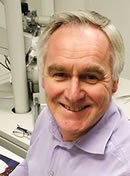Prominent scientists — including a New Zealander who is one of the world’s leading virologists — have published commentaries on whether American biosecurity experts were correct to call for suppression of details of Dutch-based research that created a potentially lethal strain of birdflu (H5N1) potentially capable of killing 50 percent of the people it infects.

The Science Media Centre gathered the following commentary on the issue from Barry Scott FRSNZ, Professor of Molecular Genetics and Head of Molecular BioSciences at Massey University
In a highly unusual move, and the first such recommendation of its kind, the National Science Advisory Board for Biosecurity (NSABB) has recommended to the US government that some of the experimental details be redacted from two papers about to be published on the transmissibility of H5N1 flu virus in ferrets.
This is a very controversial decision that has sparked outrage by some in the scientific community (e.g. see Palese 2012) as full and complete disclosure of methodology in publications is a key tenet of the scientific publication process as it enables others to repeat the experiments and design new experiments to progress the work and provide support for or against the hypotheses proposed. While the recommendation by the NSABB committee is not binding the journals involved in publishing this work have decided to abide by the recommendations of this committee.
Commentaries on the this extraordinary decision by the NSABB to redact scientific information is discussed in three commentaries published in mBio today; two in support of the decision (Klein 2012; Webster, 2012) and one against (Racaniello 2012).
These commentaries will help promote healthy and open debate on this very controversial issue. Given the scientific standing of the scientists on the NSABB committee and their considerable expertise on transmissible human viruses and other biosecurity risks, Prof Scott says it is important to respect their decision.
While there is considerable uncertainty around whether the results obtained in ferrets will translate to humans the scientists were concerned that if such transmissibility could occur in humans then the global risk to human health would be very difficult to manage.
Racaniello dismisses the arguments as “a severe case of scientific hubris”. He does raise some good points about how unlikely such an event might be to occur. Despite these criticisms the NSABB in weighing up the risks associated with the alternative usage of this scientific information decided to take a cautionary approach and restrict access to key scientific information, in particular the amino acid sequence changes that enhance transmissibility.
As Webster, an ex pat, notes, the decision is reminiscent of the 1975 self imposed decision by the scientific community to put a moratorium on the use of recombinant DNA technology until working guidelines and practices were established to manage the risks.
But in this case there is not universal acceptance of the approach been taken. Both Klein and Webster point out that the globe is ill prepared for an outbreak of a highly transmissible strain of H5N1 and therefore advocated this precautionary approach. This seems to be a wise decision at this point in time.
Even without the key methodology the publications by the Fouchier and Kawaoka groups will be of considerable interest to the scientific community and bring greater awareness to the scientific community of dual-purpose research. It is very important at this juncture that public safety is not compromised by expediency in revealing all the information. The decision appears to be a wise one.
Klein PS (2012). The NSABB recommendations: rationale, impact and implications. mBio 3: e00021-12
Palese P (2012). Don’t censor life-saving science. Nature 481: 115
Racaniello VR (2012). Science should be in the public domain. mBio 3: e00004-12
Webster RG (2012) Mammalian-transmissible H5N1 influenza: the dilemma of dual-use research. mBio 3: e00005-12